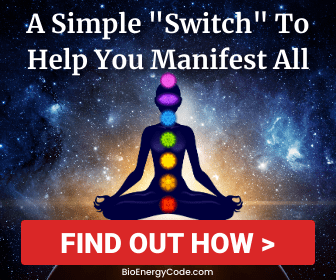Trance is a condition of semi-consciousness in which a person is not self-aware and is either completely unresponsive to external stimuli (but yet capable of pursuing and achieving an objective) or selectively responsive to the person (if any) who has produced the trance. Trance states can happen unintentionally and without warning.
Before You Continue...
Do you know what is your soul number? Take this quick quiz to find out! Get a personalized numerology report, and discover how you can unlock your fullest spiritual potential. Start the quiz now!
Hypnosis, meditation, magic, flow, prayer, and altered states of consciousness are all examples of trance.
What happens when you are in a trance?
Trance can be achieved in a variety of ways. Trancelike states can be induced by normal daily activities that involve repetitive movements and little consciousness. For example, while cooking a basic meal, someone who is very acquainted with cooking may fall into a trance, while some drivers fall into trancelike states after a lengthy journey.
In most people, hypnosis is one of the most efficient ways to create a trance. Meditation, guided imagery, and other mental exercises are used by several faiths and new age practices to help people enter trances. A person's awareness is significantly reduced while in a trance. He or she may not be able to open his or her eyes or walk around, or he or she may not notice a song on the radio or that someone is speaking to him. During trance states, this diminished awareness makes people far more suggestible.
Hypnosis and other trance-inducing techniques have been used to improve memory and change behaviors for centuries. Some people have used hypnosis to successfully quit smoking or overcome phobias, for example. When people are in a trance state, their suggestiveness increases, making it more likely that they will follow through on ideas when they wake up. It is widely understood that hypnosis cannot ordinarily be used to persuade someone to act in a way that is contrary to their moral code.
Hypnosis and trance states were increasingly utilized to recover in the 1980s and 1990s “memories that have been suppressed Because people in trances are highly suggestible, many of these memories turned out to be untrue. A therapist's subtle cues may induce a person to act in a certain way “Even after entering the trance, “remember” something that never happened. As a result, most modern practitioners now advise against using recovered memory therapy.
How do you get into a deep trance?
The trance techniques described below will take you from mild to potentially profound levels of trance. It is entirely up to you how you apply these strategies. If you have a history of schizophrenia, schizoaffective disorder, or any other kind of serious mental illness, you should get medical advice before attempting these approaches.
Breathwork
One of the more well-known trance state techniques is changing your breathing tempo and rhythm. There are a variety of yogic breathing practices you can try, such as pranayama, which is intended to clear mental and emotional blockages while also inducing a trance-like condition.
Stanislav and Christina Grof's holotropic breathwork is another type of altered breathing that involves breathing swiftly and rhythmically and can result in strong altered states of consciousness. Before practicing holotropic breathwork, talk to your doctor if you have high or low blood pressure, cardiovascular disease, or glaucoma.
Another easy breath work technique is to breathe slowly and deeply in and out. By focusing your attention on your inhalations and exhalations, you can include mindfulness into your breathwork practice, which can lead to a mild trance state.
Mantra and Prayer
Another approach to enter a trance state is by mantra, or repeated sounds or words. Mantra is used by many Hindu, Buddhist, and even Christian monks and believers to change their awareness.
Although prayer is a mild approach that might shift consciousness, I find that it only creates a light trance state because the conscious mind is an important part of the practice. If prayer speaks to you, try praying in different ways (for example, in a new language or a made-up language) to get through the rational mind's barrier. For more ideas, look up the phrase ‘glossolalia.'
Primal Rhythms, Beats, and Sounds
Shamans are frequently pictured banging their drums for a reason: the beat generates the trance state required for inner traveling.
You could get a drum (such a djembe, hand drum, or bongo) or listen to some primordial rhythmic soundscapes online. Mongolian throat singing appeals to me because it has a truly earthy, almost abyss-like aspect about it. You could want to look into sounds from indigenous civilizations or music played on instruments that help you relax. Look for sounds that are repeated and do not contain voices (unless they are in a language you do not understand). The rational mind becomes overly interested when listening to music sung by people who speak your language, which is why it's preferable to avoid it. The goal of creating trance is to move past the rational and into the subconscious's fluid state.
You could also want to try binaural beats, which are sound frequencies that can easily induce a state of altered awareness. For more information, see our article on binaural beats (I recommend exploring the Delta and Theta tracks).
Self-Hypnosis
To be honest, I'm amazed at how little self-hypnosis is discussed in spiritual circles. Perhaps I'm missing something, but self-hypnosis is a potent trance tool that can aid in deep psychospiritual transformation. Perhaps stage performers or the fear of having one's mind “managed” have tarnished hypnosis, but actual hypnosis is completely harmless. Not only that, but you are always in charge (no one can force you to “do” something unless you consent to it on some level).
Sleep… deep sleep… sleep… deep sleep… sleep… deep sleep… sleep… deep sleep… sleep… deep sleep… sleep… deep sleep… sleep… deep sleep… sleep… deep sleep… sleep… deep sleep… sleep… deep sleep… sleep… deep sleep… sleep… deep sleep… sleep… deep sleep… sleep… deep sleep… sleep… deep sleep… sleep… deep sleep… sleep A noticeable sense of warmth and lightness enters the body after a few minutes of steadily repeating these sentences, and my mind falls silent. There are a variety of ways to induce self-hypnosis, and I urge that you read our self-hypnosis article for more information.
Stare Upwards
This easy approach entails sitting somewhere quiet and comfortable while staring at a spot or item above your line of vision. As you concentrate on this single point, become aware of the walls or objects in your peripheral vision, and concentrate on both the point and your peripheral vision at the same time. For at least five minutes, maintain this look.
Hold Out a Pendulum
Yes, it seems cliche, but concentrating on a rhythmic action can help you into a trance-like condition. Pendulums are readily available at new age stores or on Amazon. You can also build your own pendulum by taking a tea bag's rope and tying something heavy on the end, such as a button or a safety pin.
To use the pendulum technique, find a peaceful spot to sit and concentrate on your pendulum. You can either ‘wish' it to move (which it will do owing to the ideomotor effect) or gently swing it to get it moving. To induce a trance state, try this practice for five to ten minutes.
Visualization
This is a common strategy with which many people are familiar. If you have a vivid imagination, visualization as a trance technique will come easily to you. You can either use a pre-recorded visualization or make your own. You could, for example, imagine light engulfing your head and entire body. Consider imagining yourself flying across the sky like a bird. You may also try a more classic approach like stair visualization, in which you go down a flight of stairs and your consciousness expands or opens as you reach the bottom (and you exit that state of consciousness by returning up the stairs). Use whichever imagery is most effective for you – this may take some trial and error, but it'll be worth it.
Incense and Essential Oil
Another fantastic approach to induce a trance state is to burn incense or apply essential oils topically. To deepen my trance states, I like to “stack” this approach with additional trance activities. Frankincense, palo santo, sandalwood, copal, myrrh, and lavender are all good trance fragrances or essential oils.
Physical and Emotional Catharsis
Physical exertion exhausts the body while also exhausting the mind, which is ideal for creating trance. There's a reason why indigenous peoples' rituals include a lot of dancing. They must realize that dancing is a strong method to circumvent the restricted ego and reconnect with the deeper Self on some level.
Catharsis can be achieved through intense cardiac exercise (running, jumping, swimming, dancing) or a trance-inducing technique such as dynamic meditation. Yoga that is too intense or too lengthy might induce a condition of altered awareness.
If all else fails, try staring at a stereotypical optical illusion like the one below for five minutes or more to induce a trance-like state:
What is the purpose of the trance?
Trance dance is an indigenous ritual in which a state of altered consciousness is created through rhythmic dancing and hyperventilation, which is still practiced by San people in the Kalahari region. It is utilized to heal individual illnesses as well as the bad qualities of a community as a whole. Southern African rock art is thought to have captured San shaman's trance dance experiences.
How do I know im in trance?
When a person in trance moves, their movements will be slow and efficient. Hypnosis is commonly accompanied by a feeling of warmth in the body. When a person enters trance, their blink rate slows down. During the first few moments of hypnosis, the eyelids flutter.
How do you know if your in a trance?
There are numerous methods for entering a trance state. It's akin to falling asleep, but without the loss of consciousness. That implies you can hear and feel things around you, but your eyes are usually closed and you aren't moving. You're just relaxing and resting peacefully.
When you relax on purpose, amazing things happen. Your breathing should slow down, and the majority of your muscles should relax. There is a sensation of separation from where you are; time is twisted, and you often experience a pleasant, almost euphoric state of tranquility.
Are trances real?
Trance states encompass all of the various mental states, emotions, moods, and daydreams that people go through. Filtering of information entering into sensory modalities is involved in all human activities, and this has an impact on brain functioning and consciousness. As a result, trance can be viewed as a mechanism for the mind to alter the way it filters information in order to make better use of its resources.
Trance states can be accessed or created by a variety of methods, and they can be used to reach the unconscious mind for relaxation, healing, intuition, and inspiration. Trance has a long recorded history, as proven by anthropologists' and ethnologists' case studies, as well as related and subsidiary disciplines. As a result, trance may be considered a Human Universal and endemic to the human state. Trance principles are being researched and documented, as are trance induction techniques. Medical and scientific research are looking at the benefits of trance states. Trance is used in many faiths and ceremonies. Trance plays a role in religion and mystical experiences as well.
According to Castillo (1995), “The primary psychological process of trance induction is strong focussing of attention, which results in trance experiences. Adaptive responses, such as institutionalized kinds of trance, are ‘tuned' into neural networks in the brain and are heavily influenced by cultural traits. In the structure of individual neurons and the organized creation of brain networks, culture-specific organizations exist.”
According to Hoffman (1998: p. 9), “Trance is still commonly referred to as a state of lowered consciousness or sleepiness. However, the more recent anthropological definition, which connects it to “alternate states of consciousness” (Charles Tart), is gaining traction.”
“…the trance state should be treated in the plural, because there are more than one altered state of consciousness considerably different from everyday awareness,” writes Hoffman (1998, p. 9).
Why do I feel like I'm in a trance?
- It's a common sign of intense anxiety, particularly among people with specific anxiety disorders.
- During an episode, there are some simple tactics you can use to “bring you back” to reality.
- Treatment for the specific form of anxiety you're dealing with should put an end to bouts of derealization.





